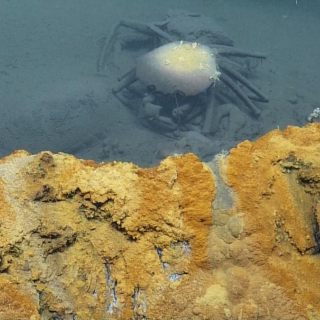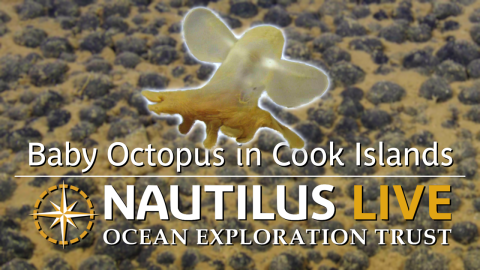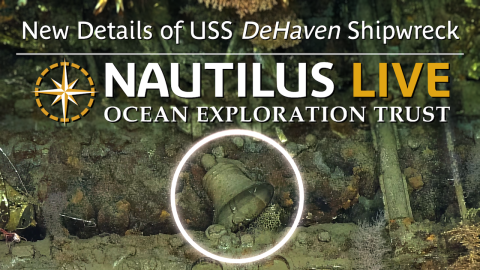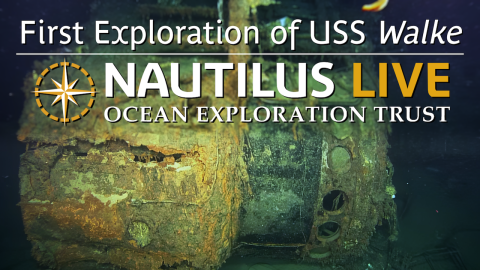Brine Pool: Hot Tub of Despair
During two cruise legs in May of the 2015 E/V Nautilus field season, we deployed remotely operated vehicle (ROV) Hercules to examine some of the cold seep features of the deep Gulf of Mexico. Cold seeps are locations where hydrocarbons that are normally trapped deep beneath the seafloor escape into the water column.
At some seep sites, seawater interacts with ancient salt deposits found deep in the seafloor, producing a highly saline fluid (brine) that can be more than four times more saline than seawater. When this brine is expelled, it is far denser than the overlying seawater and does not mix very easily with it. In some cases, the brine forms large pools, rivers or lakes.
This highly saline environment is toxic for most organisms, but we did encounter beds of mussels and fields of tube worms that have adapted to life in this extreme habitat by processing seep gases and chemicals into energy. A larger brine pool was dubbed the “Hot Tub of Despair,” referring to its warm temperature (19°C) and high salt content—which can be fatal to many animals unlucky enough to fall in. This site was found nearly 3,300 feet below the surface of the Gulf of Mexico and is a circular pool 100 feet in circumference and 12 feet deep.
We are studying these unique brine pools to better understand how they form, how they may change over time, and how the organisms living near them are able to survive—and even thrive. We analyzed water samples, conducted high-resolution mapping, and completed extensive visual surveys to gather data on these sites that our science partners continue to analyze.

Gulf of Mexico Technology Exploration
This cruise continues our exploration throughout the Gulf of Mexico region, investigating biologic, geologic, and archaeological sites. We will explore and characterize a variety of seafloor habitats across upper slope, mid-slope and lower slope depths, including hard substrate coral habitats, hydrocarbon seeps, brine pools and, time permitting, mud volcanoes.



